Milan, restoration of Girolamo Genga's altarpiece at Pinacoteca di Brera completed
The Pinacoteca di Brera in Milan has just completed the restoration of the Disputa sull’Incarnazione, the monumental altarpiece created by Girolamo Genga between 1513 and 1518 for the high altar of the church of Sant’Agostino in Cesena. This masterpiece, considered the Urbino artist’s most ambitious work, was restored by the Pinacoteca workshop in a project that lasted three years, during which visitors were able to observe the restorers’ work.
The imposingly large work (inaccessible to the Pinacoteca’s transparent laboratory) was restored inside a temporary structure specially built next to Room XXIV, which houses masterpieces by Raphael, Piero della Francesca and Bramante. Thanks to a steel support system and an innovative suction system with four movable arms, restorers were able to work on the painting, ensuring that the public could follow each stage through a glass wall. The panel, supported by a steel frame that allowed its safe handling, was treated and cleaned, revealing details previously obscured by layers of altered varnish. Among these details emerge the background architecture, marble surfaces, soft complexions, and flowers thrown by angels.
The originally warped and cracked planking was restored, while the intervention also included a thorough analysis of the painting technique and state of preservation. Diagnostic investigations, conducted in collaboration with prestigious research institutions, yielded surprising results, such as the discovery by infrared reflectography (IRR) of an accurate preparatory cartoon that Genga transferred using the spolvero technique. A full-size reproduction of this cartoon is displayed next to the restored painting, along with a video documenting the main stages of the restoration.
An important novelty that emerged during the studies concerns the reinterpretation of the work’s subject, which was initially identified as a “Dispute on the Immaculate Conception.” In light of the Augustinians’ Marian cult, the altarpiece is now believed to represent instead a “Dispute on the Incarnation,” focusing on Christ’s conception in the womb of the Virgin Mary.
The project, made possible by the contribution of theAndreotti & Brusone Philanthropy Fund, was carried out by the restoration laboratory of the Pinacoteca di Brera (Andrea Carini, Paola Borghese, Sofia Incarbone, Ilaria Negri), with Cristina Quattrini for the art historical aspects; the intervention on the wooden support was carried out by Roberto Buda. Photographic documentation was carried out by Cesare Maiocchi and Mauro Magliani. Scientific investigations were carried out by the restoration laboratory of the Pinacoteca di Brera (IRR, digital microscope, macrophotographs), the DIART laboratory of the Physics Department of the University of Milan (multispectral imaging: IRR, IRFC, UVF), by a working group including the departments of Physics and Materials Science of the University of Milan and CNR-IBFM in Segrate (point spectroscopic investigations: XRF, FORS, Raman) and by the CSG Palladio laboratory in Vicenza (stratigraphic investigations). The restoration is accompanied by the volume Girolamo Genga. La pala di Cesena e il suo restauro alla Pinacoteca di Brera edited by Andrea Carini and Cristina Quattrini (Marsilio editore).
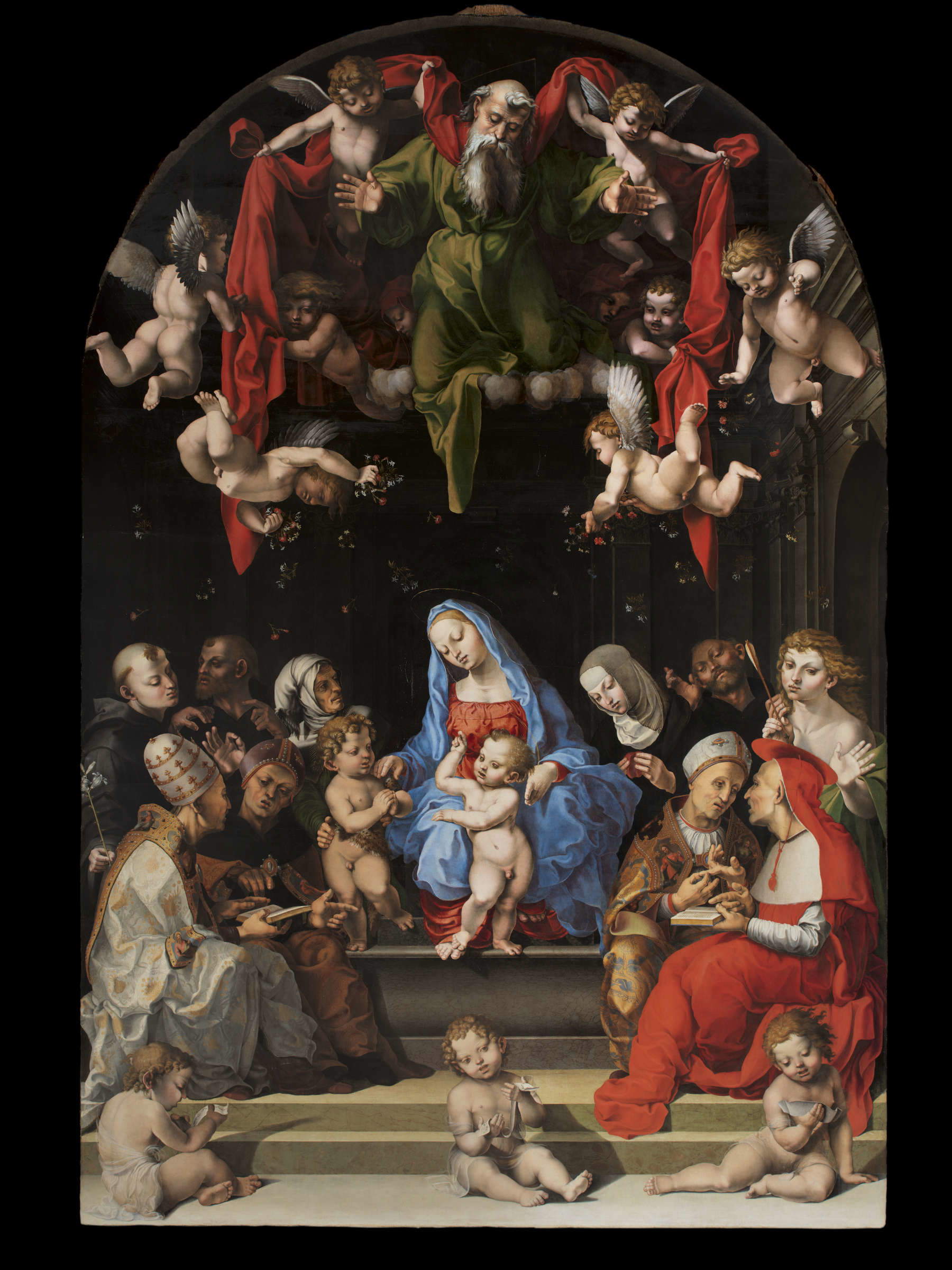
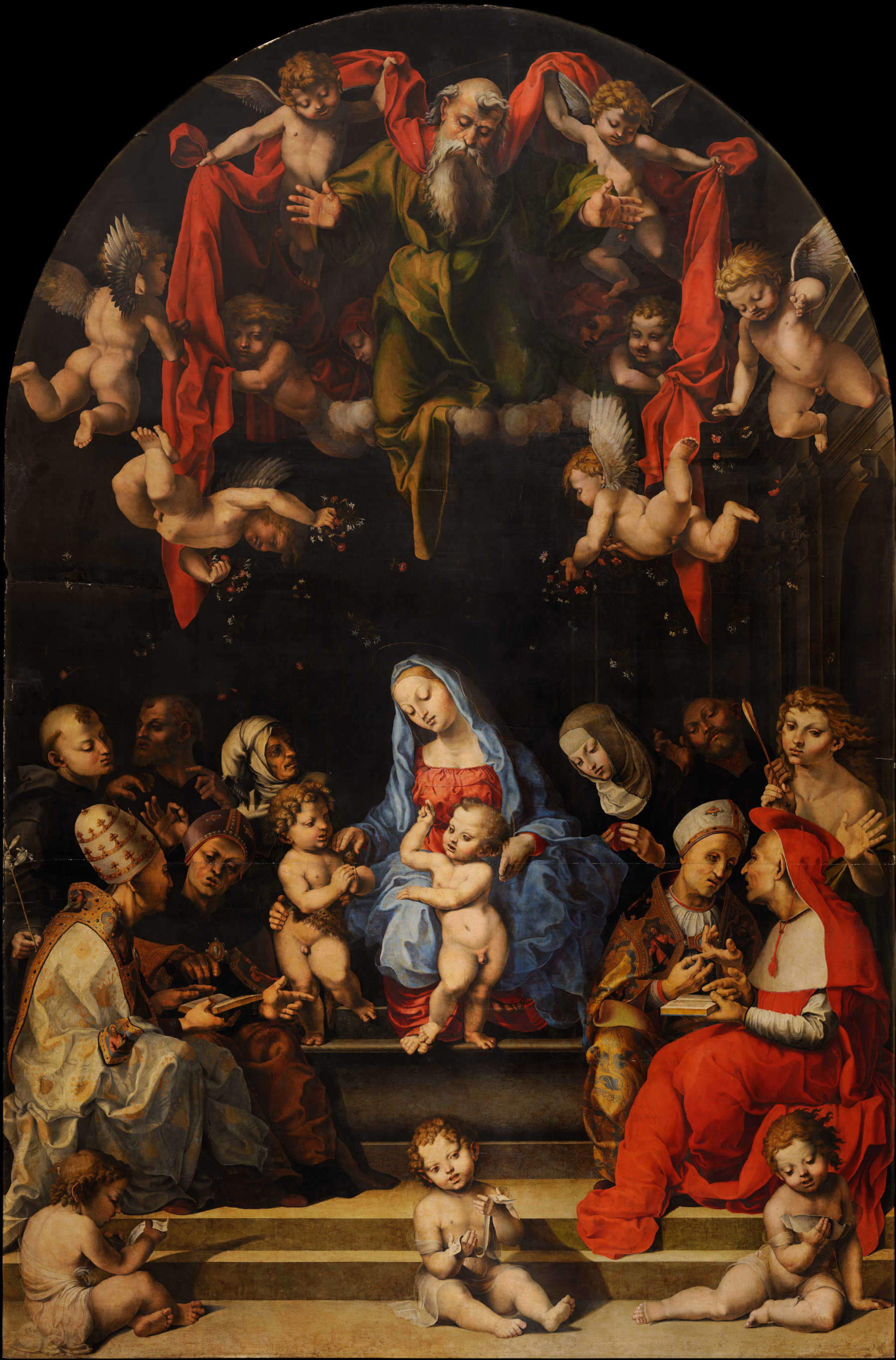

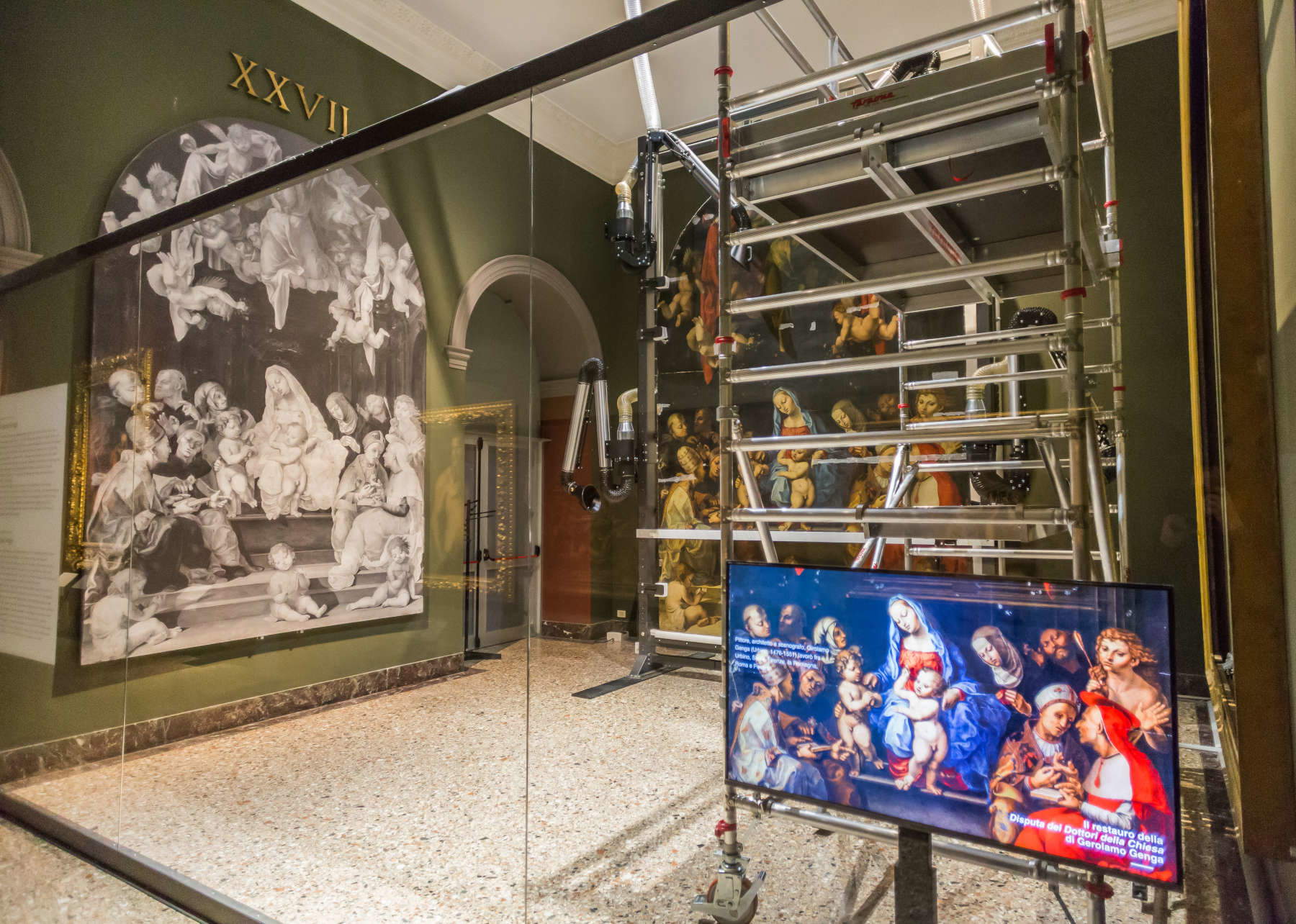
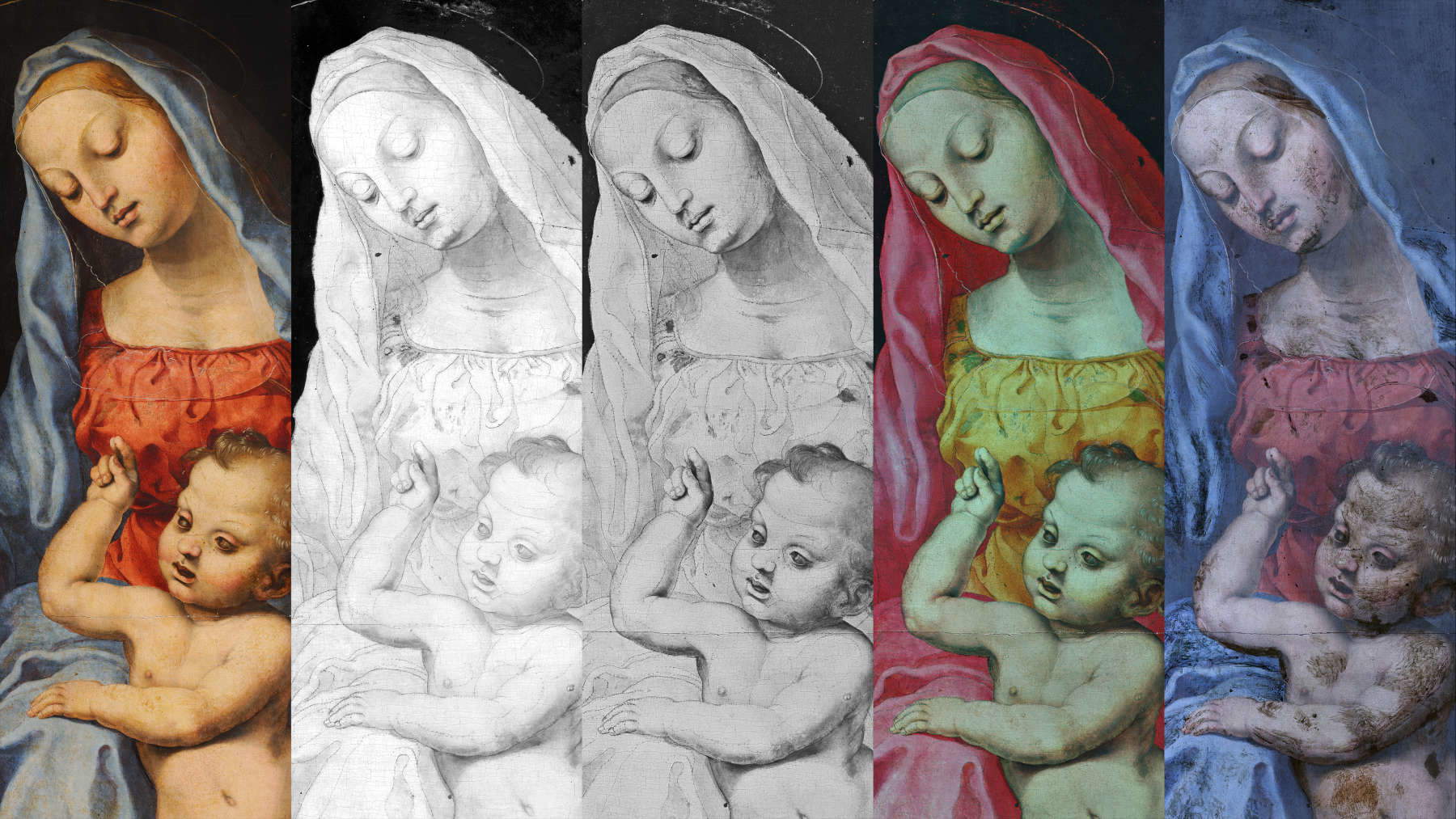


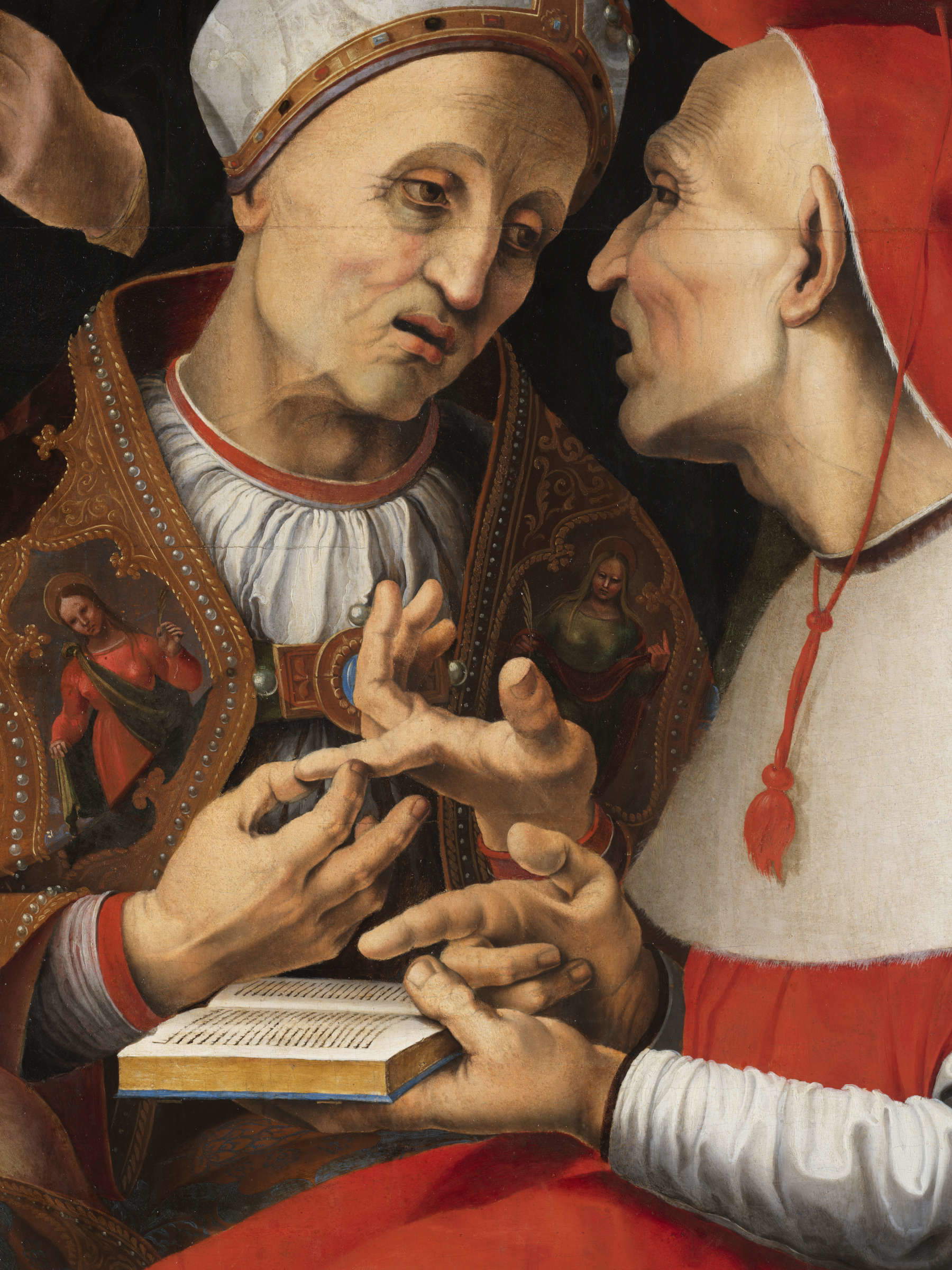
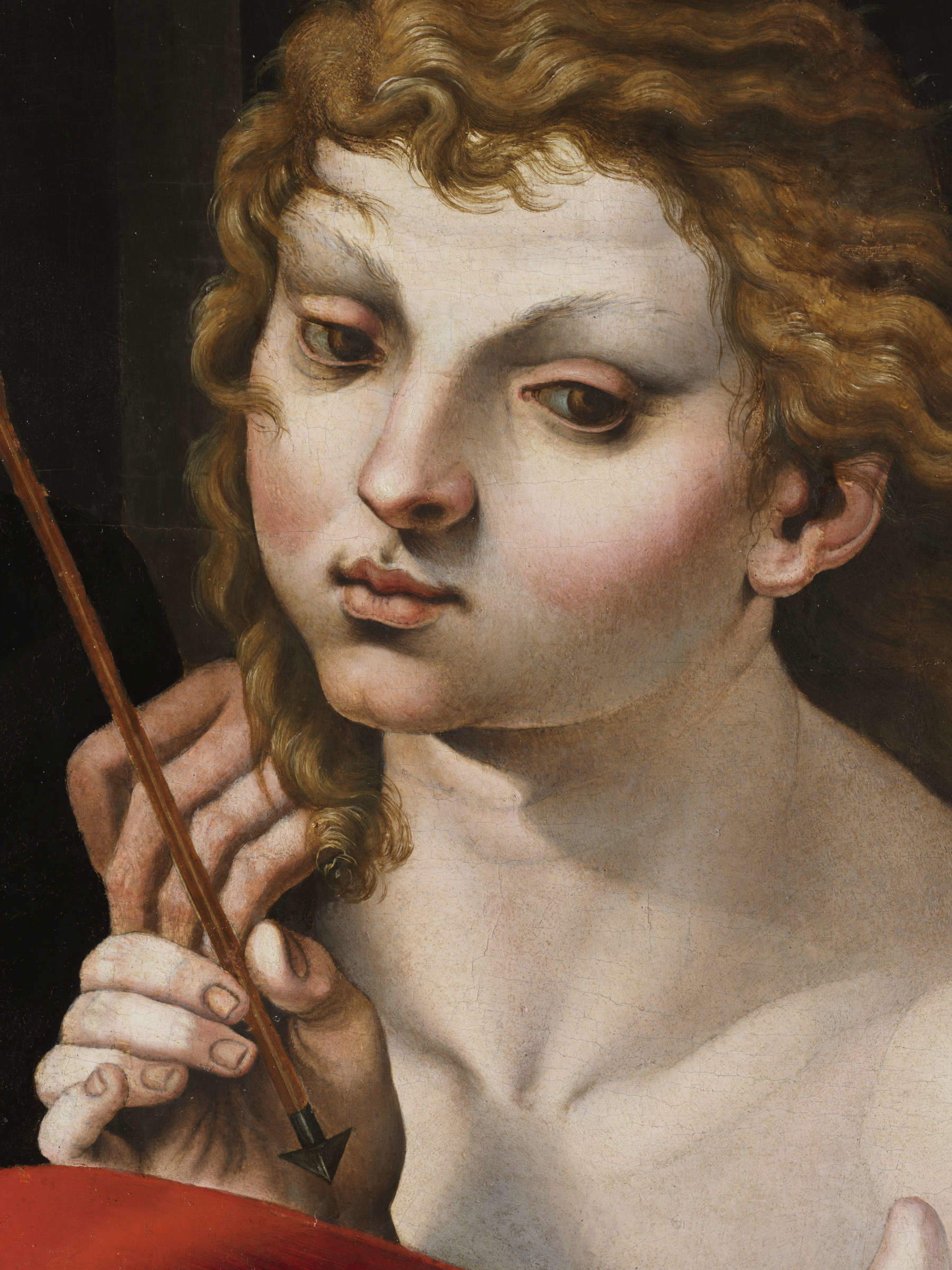
Girolamo Genga (Urbino, 1476 - 1551) is one of the most eccentric and complex figures of the Italian Renaissance. Although known primarily as a painter, he was also an architect, musician, and stage designer, enjoying great fame among his contemporaries. Sebastiano Serlio, Pietro Aretino and Giorgio Vasari praised his talent, and it is Vasari himself, in his famous Lives, who gives us the main biographical source on Genga, albeit with some inaccuracies.
The early years of his career remain unclear. Coming from an Urbino family linked to that of Raphael, Genga followed a similar path to the famous painter, frequenting the workshops of the leading Umbrian masters of the time. His apprenticeship is said to have taken place with Perugino and Luca Signorelli, although only his relationship with the latter is documented. It was from 1504 that Genga began to be recognized as an independent painter. He worked in Urbino, collaborating with Timoteo Viti on the lost frescoes of the Arrivabene Chapel, before moving to Siena in 1509 and finally to Florence, where he came into contact with the influences of Fra Bartolomeo, Raphael and Michelangelo. Between 1513 and 1518, Genga worked on the altarpiece of Sant’Agostino in Cesena, a monumental work that landed in the Pinacoteca di Brera in 1809 during Napoleonic requisitions. The work, a sacred conversation among the Doctors of the Church, is distinguished by its theatrical style and painted architecture, evidence of the architectural culture of the artist, who would soon devote himself primarily to this discipline. From 1522, Genga became architect to the dukes of Urbino, contributing significantly to the construction of the Villa Imperiale in Pesaro, where he coordinated the likes of Dosso and Battista Dossi, Bronzino and Raffaellino del Colle. His pictorial work is thus intertwined with incredible versatility, both in visual art and architecture.
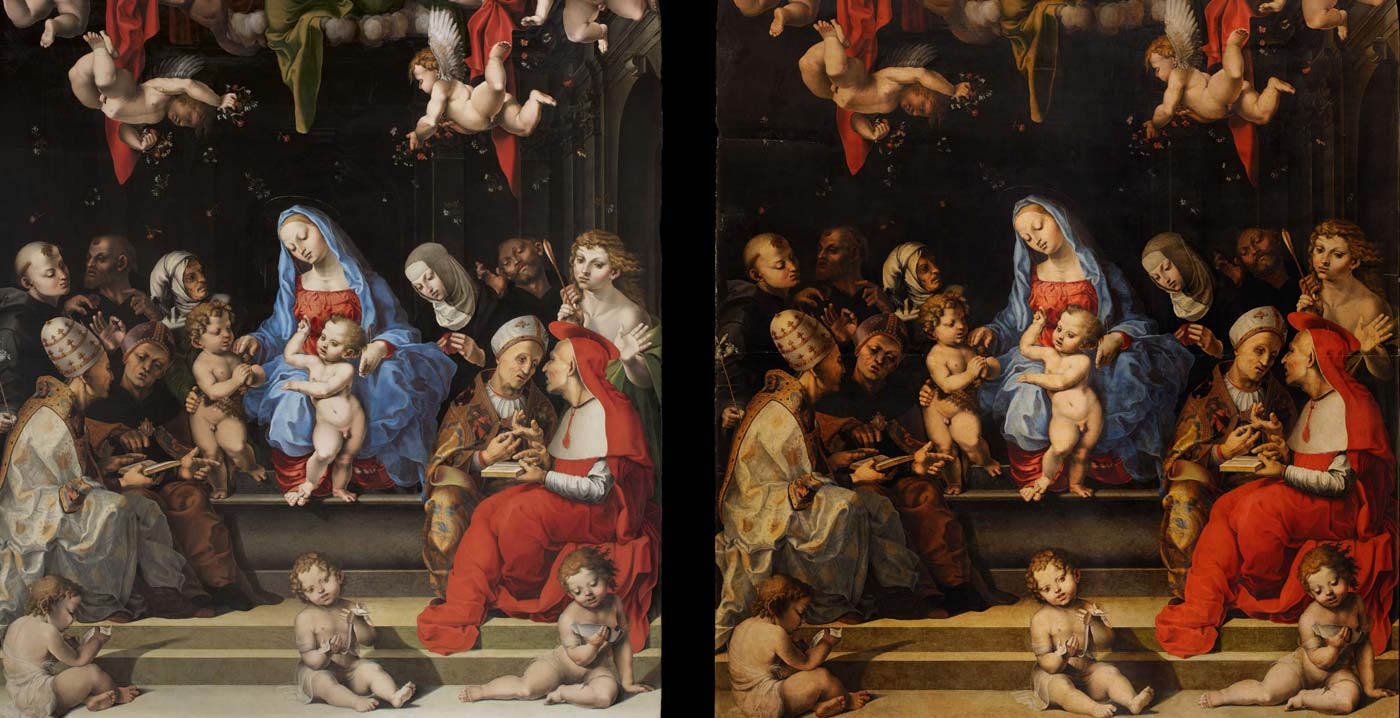 |
| Milan, restoration of Girolamo Genga's altarpiece at Pinacoteca di Brera completed |
Warning: the translation into English of the original Italian article was created using automatic tools. We undertake to review all articles, but we do not guarantee the total absence of inaccuracies in the translation due to the program. You can find the original by clicking on the ITA button. If you find any mistake,please contact us.





























